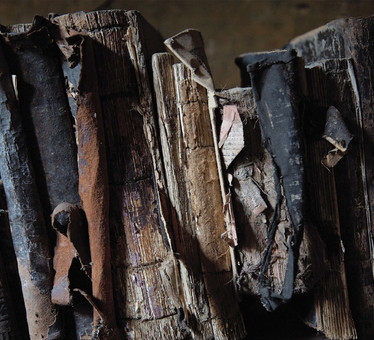Yuri Dojc

Humenné, Slovakia, 1946
As in life, we find in Yuri Dojc’s photographic work those elementary contradictions that persevere in the heart of every being without our being able to give them a synthesis or solution. Indeed, in his photographs, desire and death, creation and destruction, historical time and the time of dreams parade through, all as part of a gaze that allows us to glimpse the ineffable meaning of beauty and pain.
Born in former Czechoslovakia, Dojc emigrated to Canada in 1968, when Soviet tanks took to the streets of his home country. In his new homeland, the photographer began a successful career in commercial photography combined with the exercise of artistic photography. Never limited to a single theme, Dojc’s photographic practice varies between moments of humor and the most serious introspection. Thus, in one of his series, American Dreams, the artist uses souvenirs, often using collages, to play with the US cultural imagination, combining pop culture icons, national symbols and toys together in vibrant settings in surreal photos and amazing. On the other hand, in contrast to the intense colors and unusual compositions of the American Dreams, in the female nudes photographed by Dojc, black and white predominate, essential to the insinuation of the erotic element from the shadows and suggestions, of what they prevent and hide the look, giving the female bodies and faces the crystallization of moments that alternate between something of freedom, serenity and distraction in counterpoint to a certain meditative density and a poignant melancholy
Alongside these incursions into the realms of dream and desire, Dojc’s work also characterizes a sensitive observation of the past, particularly the past of those who were denied the right to life and humanity. This is present at various times, such as those photos in which the artist takes as his theme the bones of the victims of the Rwandan genocide; or in the North is Freedom project, in which Dojc portrays Canadian descendants of slaves who fled the captivity of farms in the US south and headed north in search of freedom. But it is in his main and longest project, Last Folio, that Dojc’s eyes turn more emphatically to the appeals of the past. In this project started in 1997, the photographer, together with documentary filmmaker Katya Krausova, returns to now independent Slovakia to portray Shoah victims who survived Auschwitz. In this journey, which is also personal, as he is the son of Jews, Dojc ends up rebuilding part of the past of the Jewish community in Slovakia, since his photographic itinerary, in addition to the portraits of the survivors, also involves the mute testimonies of the invaded ruined synagogues through vegetation; the abandoned classrooms that await the return of those students and teachers who are gone forever; the Torah scrolls that still await the zealous hands of the sages who can open them and decipher them; the spines of books that harbor words that will never be uttered again and that are in danger of vanishing into air under the weight of the lightest touch.
By photographing these objects that seem to fulfill the course of their disappearance, Dojc removes them from the undifferentiated matter of the past and reintegrates them as part of History, since History only constitutes itself when looked at. These photographs, thus, attest not only to the existence of what is visible in them, but mainly to the presences that are incomplete, of a throbbing world of voices and faces that, by force of hatred and the consummation of barbarism, was suddenly thrown into the forgetfulness. Through them, one knows simultaneously the past and the future, what precedes and what follows from a peremptory moment of horror. But still, this sadness that blurs the entirety of time as a witness to acts without remission is balanced with a fragile beauty that threatens to emerge as an emanation of those objects that cry out for the ardor of those unknown and interrupted existences that resist oblivion in them and protest in in favor of the vehemence of life.
VRP